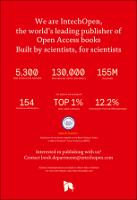Chapter Resilience in Critical Infrastructures: The Role of Modelling and Simulation
| dc.contributor.author | Foglietta, Chiara | |
| dc.contributor.author | Panzieri, Stefano | |
| dc.date.accessioned | 2021-06-02T10:13:26Z | |
| dc.date.available | 2021-06-02T10:13:26Z | |
| dc.date.issued | 2020 | |
| dc.identifier | ONIX_20210602_10.5772/intechopen.94506_485 | |
| dc.identifier.uri | https://library.oapen.org/handle/20.500.12657/49371 | |
| dc.description.abstract | Resilience and risk are fundamental concepts for critical infrastructure protection, but it is complex to assess them. Modelling critical infrastructure interdependency helps in evaluating the resilience and risk metrics. We propose the MHR approach as a road-map to model infrastructures and it is implemented using CISIApro 2.0. MHR suggests considering three different layers in each infrastructure: holistic, service and reductionist agents. In this chapter, this framework has been tested in a scenario made of a modern telecommunication network, a hospital ward and a smart factory. The scenario takes into account cyber attacks and their consequences on the components, services and holistic nodes. The proposed framework is under validation within the EU H2020 RESISTO project with good results and in various test-beds. | |
| dc.language | English | |
| dc.subject.classification | thema EDItEUR::T Technology, Engineering, Agriculture, Industrial processes::TB Technology: general issues::TBC Engineering: general | en_US |
| dc.subject.other | resilience metric, risk management, critical infrastructure modelling, simulation | |
| dc.title | Chapter Resilience in Critical Infrastructures: The Role of Modelling and Simulation | |
| dc.type | chapter | |
| oapen.identifier.doi | 10.5772/intechopen.94506 | |
| oapen.relation.isPublishedBy | 09f6769d-48ed-467d-b150-4cf2680656a1 | |
| oapen.relation.isFundedBy | CIP-2016-2017-2 | |
| oapen.grant.number | 786409 | |
| oapen.grant.acronym | RESISTO |

